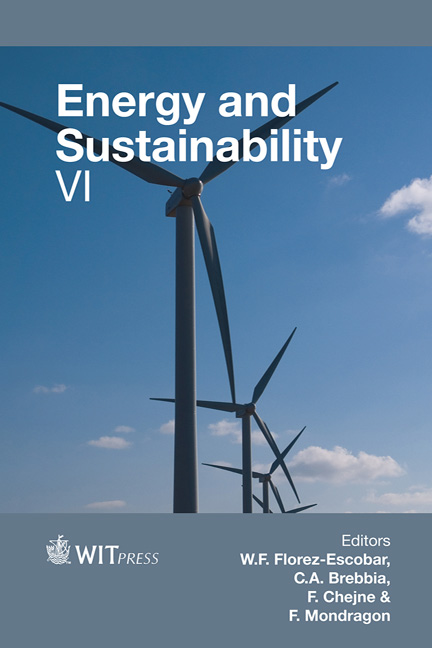Power Generation Alternatives From Biomass Gasification Using Different Syngas Pathways
Price
Free (open access)
Transaction
Volume
195
Pages
11
Page Range
51 - 61
Published
2015
Size
394 kb
Paper DOI
10.2495/ESUS150051
Copyright
WIT Press
Author(s)
F. Campuzano, C. Arenas, M. Betancur, A. Hill, J. D. Martínez
Abstract
In this work three different ways to produce 1 MWe from biomass gasification syngas are presented. The studied pathways considered the biomass gasification in order to produce syngas able to be transformed into liquid fuels through (i) fermentation and (ii) Fischer Tropsch (FT) synthesis. Later, both liquid fuels were assumed to be powered in a spark ignition engine and in a compression ignition engine, respectively. The third pathway is (iii) the direct use of syngas in a gas-fired reciprocating engine. Syngas composition was predicted from three residual lignocellulosic biomasses (rice husk, sugarcane bagasse and coffee husk) using a stoichiometric equilibrium model. It was found that the direct use of syngas (LHV ~6.72 MJ/Nm3) needs less biomass (~800 kg/h) to achieve 1 MWe in comparison with the other two pathways. Diesel fuel from FT and ethanol from the fermentation process require around 1500 kg/h and 2500 kg/h of biomass respectively to achieve the same power. The FT synthesis considered the production of a synthetic liquid fuel similar to diesel fuel in terms of heating value (LHV ~44 MJ/kg), while syngas fermentation took into account the ethanol production (LHV ~27 MJ/kg). The above results, for the three different fuels, were assessed considering the thermal efficiencies of each specific internal combustion engine.
Keywords
syngas, gasification, Fischer Tropsch, syngas fermentation, internal combustion engine





